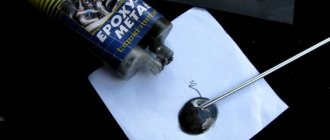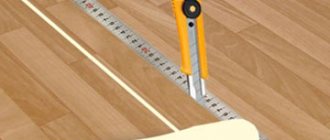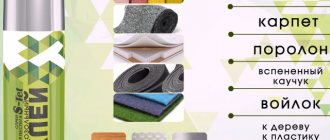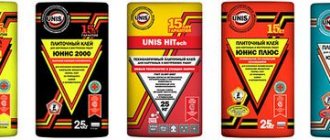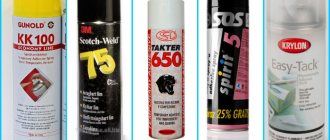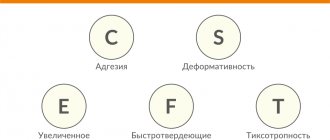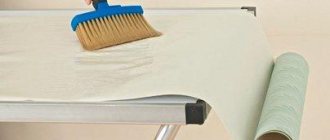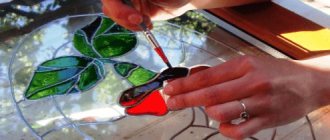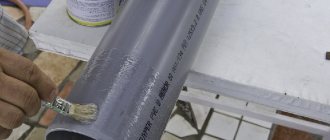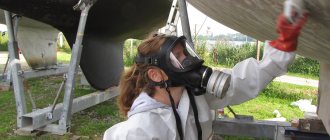Selection Criteria
Metal glue is an alternative to classical welding.
The advantages include ease of use and no need to have special equipment. You can work at home without experience, relying only on the instructions for use.
In order for the connection of metal to metal or other material to be reliable, the means must be chosen taking into account future operating conditions. For example, the composition must be waterproof or heat resistant.
You should also pay attention to:
- for the period, conditions for hardening;
- maximum, minimum temperature at which the glue retains its properties;
- method of application to the surface - spot or continuous;
- type, form of glue (liquid, paste, one or two-component);
- the maximum load-bearing capacity of the seam, its elasticity.
The surfaces to be bonded are also taken into account. Universal mixtures will not be the best solution. It is necessary to use specific glue for specified purposes.
The increased viscosity of the composition expands the scope of application.
Advantages of gluing
The use of metal gluing does not require personnel to have any distinctive professional skills or special equipment. After the operation, the seams are exceptionally tight and most often resistant to moisture. This technological operation can be performed at any place. Unlike traditional welding, adhesive seams, as a rule, are not subjected to additional mechanical processing.
In addition, gluing metal does not require much labor and this leads to a reduction in the cost of the unit.
This technology is used when it is not possible to use other methods of joining metal workpieces.
Types of adhesives for metal
The most popular are epoxy adhesives, which come in one-component and two-component types.
- One-component ones are immediately ready for application.
- Two-component requires dilution before use. The resin is mixed with a hardener and applied to the surface.
Epoxy comes in liquid or paste form.
The second option resembles a block of plasticine, which is kneaded with your fingers and applied to metal or other base.
Depending on the speed of hardening, adhesives can be slow or fast.
An example of an epoxy mixture is Poxipol. Available in two tubes.
There are adhesives based on acetone and plastic. They harden due to the evaporation of the solvent. Not suitable for surfaces that will become hot.
Cold welding on metal
Review of epoxy adhesives
Hot melt adhesive, produced in the form of rods, is actively used in needlework. They are tucked into a glue gun and melt under high temperature. By pressing the trigger, the molten rod is applied to the iron through the nozzle of the heat gun.
The best superglue for plastic
Instant (second) Loctite 406 is suitable for domestic use. It is used for joining plastic parts and products. In addition to the record holder, there are other good glues:
- "Super Moment Maxi." Also owned by Henkel, produced in Ireland. Sets in 5–60 seconds. It hardens completely in 12–24 hours. Takes different types of plastic.
- 3M Scotch-Weld. Smooth surfaces stick together tightly, rough surfaces tear apart, but with difficulty. It is better not to use for moving elements.
- Hard Plastic Glue. Popular with plumbers as it is ideal for PVC and hard plastic parts. Heat-resistant and water-resistant adhesive firmly connects pipes and other elements. Used for repairing gadgets and small household appliances.
Stamps
Poxipol
The glue is heat-resistant, water-resistant, and quick-hardening. Withstands low temperatures, resistant to moisture, waterproof. Adheses well to many surfaces. It has a gray color, which makes it invisible on metal.
The Poxipol package contains two tubes - the main component and the hardener. Mix in a 1 to 1 ratio and immediately apply to the metal base.
After 10 minutes the layer becomes durable. After an hour, the part can be machined - drilled, cut, sawed. But, complete polymerization requires 24 hours.
Poxipol is inexpensive, but has disadvantages:
- does not connect thin bases end to end;
- Due to its thick form, it is applied only in a thick layer.
Weicon VA 110
The composition has officially confirmed environmental friendliness (NSF certification).
- The glue is moisture resistant;
- operating temperature -30 – +80 °C;
- because of the cyanoacrylate it contains, it is called superglue - polymerization from 20 to 50 s;
- maximum strength after 24 hours;
- shear strength – up to 20 N per mm2 after sandblasting;
- no color, completely transparent;
- in addition to metal, glues plastic, rubber, caoutchouc and others;
- Can be used for metal utensils that come into contact with food.
The composition is expensive: for a 12-gram tube you will have to pay a little more than 1 thousand rubles, while 60 g of the product costs more than 3 thousand.
Strong steel stick renewal composite 114 g
Has high adhesion and rapid polymerization (20 minutes). The basis is epoxy resins. The structure is plastic, easy to apply. The shape is a plasticine rod. Before application, knead with hands.
After polymerization, it is resistant to stress, chemicals, salts, alkalis, acids, and solvents.
Great for patching pipes. Difficult to access on the Russian market, not so cheap. It has disadvantages similar to Poxipol.
Weicon RK-1500
Two-component adhesive composition for metal. Connects iron, steel, aluminum, and other alloys. Strongly holds thin sheets of metal end to end.
- Also suitable for plastics and ceramics.
- The glue can be called high-temperature: it can be used from -50 to +130 °C, and overheating is allowed up to 180 °C for a short time.
- Tensile strength after drying up to 26 N per square meter. mm.
- 5 minutes after treatment, the adhesive joint reaches its initial strength.
- The activator can be added to one or both sides of the main component. This depends on the thickness of the applied layer - from 0.4 mm to 0.8 mm.
- The activator must be applied carefully. Due to the too liquid consistency, it may spread.
- It even glues substrates of different structures, the adhesion between which is minimal, for example, metal with glass, other smooth substrates.
EpoximaxX
It is an improved version of the classic epoxy EAF. The hardening time (3 hours), thermal resistance (120 °C) have changed, and operation in heated conditions has become possible. EpoximaxX does not change properties when moistened. Tensile strength is 60-80 MPa.
The consistency is liquid, so application with a brush is possible. Recommended for gluing large areas overlapping rather than end-to-end. It's inexpensive.
Bison Super Glue Gel
This is superglue for minor household repairs. It is universal and adheres to different materials. The consistency is similar to a gel, which makes it easier to use and prevents spreading.
- It hardens in one to two minutes, which allows you to adjust the position of parts after fastening and reduce the risk of finger gluing, as in the case of conventional superglue.
- By spreading it on the metal, small cracks are filled with glue. pores, which increases the reliability of the coupling.
- The tube contains only 3 g of substance, enough only for small jobs.
Improved bonding quality
Before gluing metal parts, it is necessary to carry out preparatory work, namely, it is necessary to clean it.
Both metal surfaces that will be connected must be cleaned of dirt, grease, and oils.
You can use detergents for this. After processing, they should be wiped dry; it would not hurt to blow the surface with dry air.
By the way, there are substances on the market called primers. After treating a clean surface with this composition, adhesion improves.
Heat-resistant adhesive type "300"
Withstands temperatures up to 1000 degrees. And the lower limit is 300 degrees. The components do not deteriorate and do not change properties even after prolonged exposure to temperatures. Used in ovens and other heating devices.
If materials differing in structure, for example, metal and brick, are glued together, then both of them must be thermally resistant.
For interior work, a composition with minimal toxicity is selected.
Some manufacturers add refractory clay or a reinforcement element to the composition of the products to increase the strength of the connection.
- A well-known brand is the Russian D-3142. Glues ceramic tiles to the metal base of furnace equipment. Withstands heat up to 850 °C for a long time.
- Moment Epoxylin. Produced by the German company Henkel. Epoxy is used as a basis. Bonds iron, ceramic and other fragile substrates.
Loctite composition with record strength
The Guinness Book of Records contains information about Loctite glue. It is considered the most powerful adhesive. Only 9 drops were needed for the test. A passenger car was placed in the back of a pickup truck and secured with Loctite. Both cars were lifted into the air. This superglue held 5 tons.
The record holder brand belongs to the German company Henkel. The strongest glue is used to connect various surfaces, bushings, flanges, etc. It is used by European car manufacturers. The anaerobic composition hardens in the absence of air and is resistant to lubricants.
How to glue correctly
The metal surface is cleaned of traces of rust, stains, dirt, and dust. The use of solvents or gasoline is not recommended. Adhesion can be increased by pre-treatment with a primer.
Glue is being prepared. If it is two-component, both ingredients are mixed in the required proportions. It is applied to the iron, both bases are pressed against each other, placed under a press or clamped in a vice.
Stirring and applying epoxy is done with a spatula or plate. It is often included with the packaging.
There are gluing methods, depending on the quality of the seam that needs to be obtained.
- Static rigid bonding. It is used for structures that will not be subjected to large mechanical loads or expand (contract) with temperature changes.
- Deformation bonding. On the contrary, it is used to create an elastic connection on structures subject to regular loads. For example, stairs, car bodies, racks, signs and others. Suitable for fixing metals with different linear expansion coefficients when heated or cooled.
An epoxy agent is suitable for both methods.
If the part is located in conditions of high humidity or under water, the adhesive seam is covered with a layer of paint. Otherwise, it will absorb moisture and corrosion will begin to appear.
